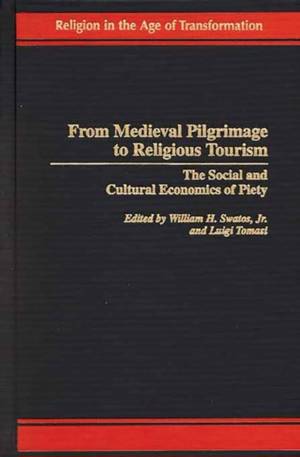
- Retrait gratuit dans votre magasin Club
- 7.000.000 titres dans notre catalogue
- Payer en toute sécurité
- Toujours un magasin près de chez vous
- Retrait gratuit dans votre magasin Club
- 7.000.0000 titres dans notre catalogue
- Payer en toute sécurité
- Toujours un magasin près de chez vous
From Medieval Pilgrimage to Religious Tourism
The Social and Cultural Economics of Piety
Description
Bringing together prominent scholars in the sociology of religion, this collection of essays offers a framework for understanding the transition from the essentially penitential purposes of the medieval pilgrimage, to the rise of the varied spiritualities of contemporary religious tourism. Covering over 1,500 years of religious travel, these essays explore the forms of expression and experience which we must engage reflectively to better understand the idea of pilgrimage and religious tourism as an important aspect of religious affirmation. This unique volume sheds light on the transformation of the traditional religious pilgrimage into a tourist activity and examines the influence of modern culture, technology, and secularization on spiritually motivated travel.
The editors conclude that a sharp distinction between pilgrimage and religious tourism is historically unjustified. While the purposes of such travel have changed over time, they remain a part of a larger religio-cultural context, offering avenues for religious encounter, just as pilgrimage in earlier eras permitted the development of various secular dimensions. Covering such diverse topics as Pagan pilgrimage and Postmodern Traditionalism, medieval pilgrimage and disaster site visitation, the authors provide an interesting look at an often misunderstood phenomenon.Spécifications
Parties prenantes
- Editeur:
Contenu
- Nombre de pages :
- 232
- Langue:
- Anglais
- Collection :
Caractéristiques
- EAN:
- 9780275973841
- Date de parution :
- 28-02-02
- Format:
- Livre relié
- Format numérique:
- Genaaid
- Dimensions :
- 154 mm x 242 mm
- Poids :
- 458 g

Les avis
Nous publions uniquement les avis qui respectent les conditions requises. Consultez nos conditions pour les avis.





